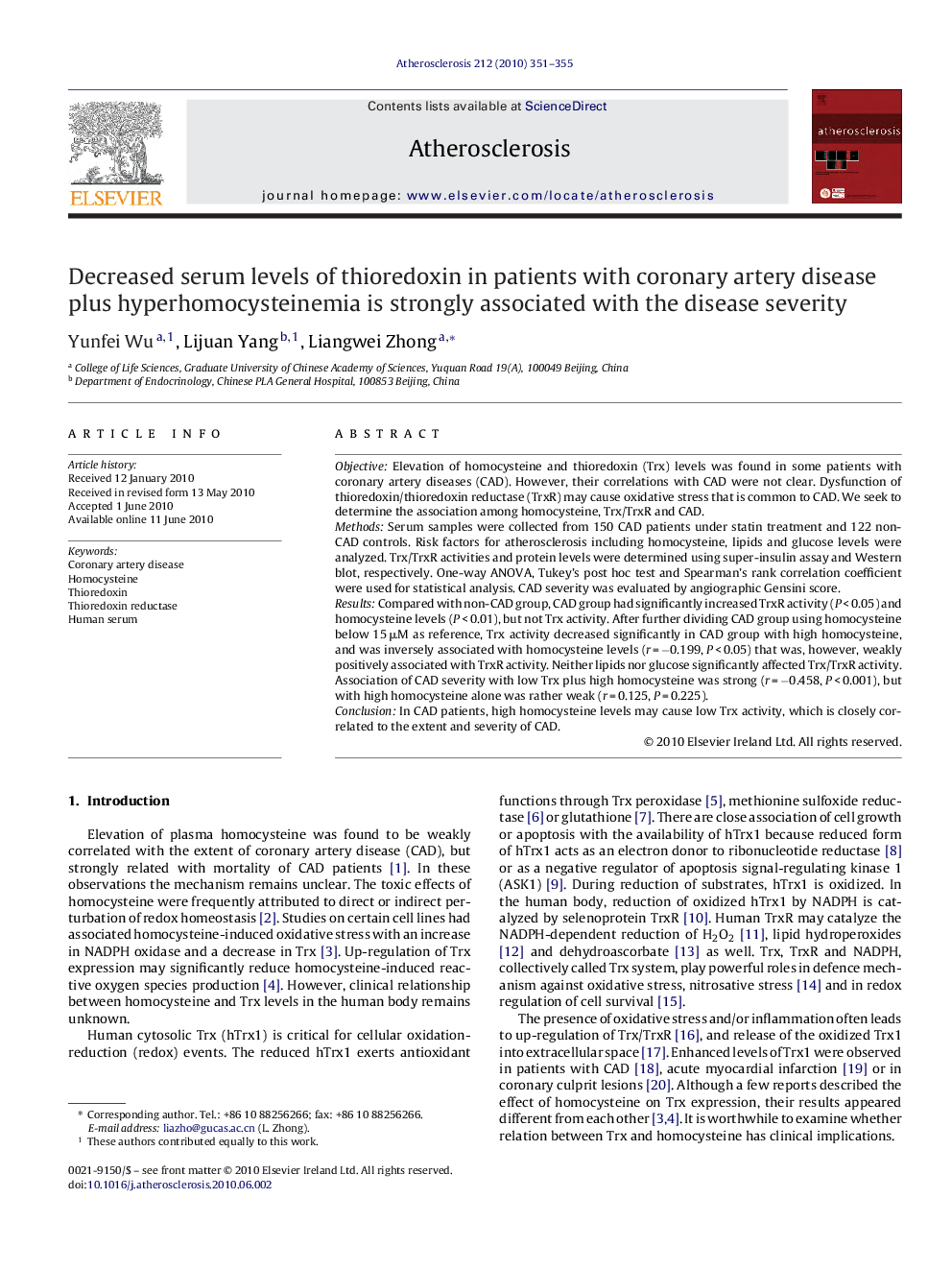| Article ID | Journal | Published Year | Pages | File Type |
|---|---|---|---|---|
| 2892875 | Atherosclerosis | 2010 | 5 Pages |
ObjectiveElevation of homocysteine and thioredoxin (Trx) levels was found in some patients with coronary artery diseases (CAD). However, their correlations with CAD were not clear. Dysfunction of thioredoxin/thioredoxin reductase (TrxR) may cause oxidative stress that is common to CAD. We seek to determine the association among homocysteine, Trx/TrxR and CAD.MethodsSerum samples were collected from 150 CAD patients under statin treatment and 122 non-CAD controls. Risk factors for atherosclerosis including homocysteine, lipids and glucose levels were analyzed. Trx/TrxR activities and protein levels were determined using super-insulin assay and Western blot, respectively. One-way ANOVA, Tukey's post hoc test and Spearman's rank correlation coefficient were used for statistical analysis. CAD severity was evaluated by angiographic Gensini score.ResultsCompared with non-CAD group, CAD group had significantly increased TrxR activity (P < 0.05) and homocysteine levels (P < 0.01), but not Trx activity. After further dividing CAD group using homocysteine below 15 μM as reference, Trx activity decreased significantly in CAD group with high homocysteine, and was inversely associated with homocysteine levels (r = −0.199, P < 0.05) that was, however, weakly positively associated with TrxR activity. Neither lipids nor glucose significantly affected Trx/TrxR activity. Association of CAD severity with low Trx plus high homocysteine was strong (r = −0.458, P < 0.001), but with high homocysteine alone was rather weak (r = 0.125, P = 0.225).ConclusionIn CAD patients, high homocysteine levels may cause low Trx activity, which is closely correlated to the extent and severity of CAD.
